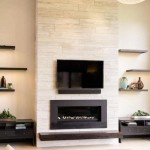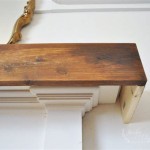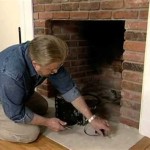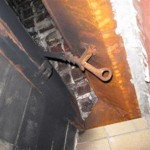What Paint to Use on a Brick Fireplace: A Comprehensive Guide
Painting a brick fireplace can dramatically alter the aesthetic of a living space, transforming a dated or undesirable feature into a focal point that complements the overall décor. However, selecting the correct type of paint is crucial for achieving a durable, aesthetically pleasing, and safe finish. The inherent properties of brick, including its porosity and exposure to heat, necessitate a more considered approach than painting drywall or other common surfaces. This article provides a comprehensive overview of the optimal paint types for brick fireplaces, alongside considerations for preparation and application.
Brick, composed primarily of clay and fired at high temperatures, is a porous material. This porosity allows it to absorb moisture, which can lead to paint blistering, peeling, and eventual failure if the wrong type of paint is used. Furthermore, fireplaces are subject to temperature fluctuations, especially around the firebox. The paint must be able to withstand these temperature changes without cracking or releasing harmful fumes. Choosing the appropriate paint fundamentally stems from understanding these material properties and environmental factors.
Understanding the Key Properties of Suitable Paints
Several key properties differentiate suitable paints for brick fireplaces from standard interior paints. These properties directly relate to the durability, longevity, and safety of the finished product. Ignoring these factors can result in costly and time-consuming rework.
Breathability: A breathable paint allows moisture to escape from the brick, preventing it from becoming trapped beneath the paint film. Trapped moisture can lead to paint delamination, efflorescence (the deposit of salt on the surface of the brick), and ultimately, damage to the brick itself. Breathability is particularly important for fireplaces located in areas with high humidity or those prone to moisture infiltration.
Heat Resistance: The paint must be able to withstand the heat generated by the fireplace. Standard latex paints are not designed for high temperatures and can soften, blister, or even emit toxic fumes when exposed to heat. Paints formulated for higher temperatures are essential, particularly for areas directly adjacent to the firebox opening.
Alkali Resistance: Brick is alkaline, and some paints are susceptible to alkali burn, which can cause discoloration, peeling, and degradation of the paint film. Paints with good alkali resistance are necessary to ensure long-term adhesion and color retention.
Adhesion: Proper adhesion is critical for any paint job, but it is especially important on brick due to its textured surface. A paint with strong adhesive properties will bond effectively to the brick, minimizing the risk of peeling or chipping. Proper surface preparation, including cleaning and priming, significantly enhances adhesion.
Recommended Paint Types for Brick Fireplaces
Given the properties discussed above, several paint types are well-suited for brick fireplaces. Each offers a different balance of cost, durability, and aesthetic appeal.
Latex Paint (with Primer): While standard latex paints are generally not recommended for brick fireplaces without additional preparation, a high-quality acrylic latex paint, combined with a suitable primer, can be a viable option, especially for areas away from direct heat. The primer serves as a bonding agent and helps to seal the porous surface of the brick. Choose a primer specifically formulated for masonry or brick. It is imperative to select a 100% acrylic latex paint, as these paints offer better flexibility and durability compared to vinyl acrylic blends. For optimal results, consider a breathable latex paint designed for masonry. This option is best suited for decorative brickwork that is not in direct contact with the fireplace opening.
Masonry Paint: Masonry paints are specifically formulated for use on brick, concrete, and other porous masonry surfaces. They are typically alkali-resistant, breathable, and designed to withstand the rigors of exterior exposure. While primarily intended for exterior applications, many masonry paints are also suitable for interior use, including brick fireplaces. Look for masonry paints labeled as suitable for interior use, and prioritize those with a matte or satin finish, as these tend to be more breathable than high-gloss options. Masonry paints are often thicker than standard latex paints, requiring more effort during application.
Silicate Paint: Silicate paints, also known as mineral paints, are composed of potassium silicate and mineral pigments. They offer exceptional breathability, allowing moisture vapor to pass freely through the paint film. This makes them an excellent choice for brick fireplaces prone to moisture issues. Silicate paints chemically bond with the brick, creating a durable and long-lasting finish. They are also naturally alkali-resistant and resistant to mold and mildew growth. However, silicate paints require careful surface preparation and application, and they are typically more expensive than other paint options. Furthermore, they require a mineral-based primer for optimal bonding. They are an excellent option for historic brickwork or situations where breathability is paramount.
Heat-Resistant Paint: For areas of the fireplace that are in direct contact with high heat, such as the firebox surround, a specialized heat-resistant paint is essential. These paints are formulated to withstand temperatures up to 1200°F (650°C) or higher without blistering, cracking, or emitting harmful fumes. Heat-resistant paints are typically available in aerosol cans and are specifically designed for use on surfaces such as stoves, grills, and fireplace components. They are often formulated with silicone or ceramic additives to enhance their heat resistance. It is crucial to follow the manufacturer's instructions carefully when applying heat-resistant paint, as proper application is critical for ensuring its performance.
Preparation is Key: Essential Steps Before Painting
Regardless of the paint type chosen, proper surface preparation is critical for achieving a long-lasting and aesthetically pleasing finish. Inadequate preparation is a common cause of paint failure on brick fireplaces.
Cleaning: Thoroughly clean the brick surface to remove any dirt, dust, soot, grease, or efflorescence. Use a stiff-bristled brush and a solution of trisodium phosphate (TSP) or a similar cleaner specifically designed for masonry. Rinse the surface thoroughly with clean water and allow it to dry completely. For stubborn stains or efflorescence, a muriatic acid solution may be necessary, but use caution and follow all safety precautions. Always wear gloves, eye protection, and respiratory protection when working with muriatic acid.
Repairing Cracks and Damage: Inspect the brick for any cracks, chips, or damaged mortar joints. Repair any damage using a masonry patching compound or mortar. Allow the patching compound or mortar to cure completely before proceeding with painting. Failure to repair damage can compromise the integrity of the paint film and lead to further deterioration of the brick.
Priming: Apply a primer specifically formulated for masonry surfaces. The primer will help to seal the brick, improve adhesion, and prevent the paint from being absorbed unevenly. Choose a primer that is compatible with the paint you have selected. For latex paints, use a latex primer; for silicate paints, use a mineral-based primer. Allow the primer to dry completely before applying the paint.
Masking: Use painter's tape to mask off any areas that you do not want to paint, such as the surrounding wall, the firebox opening, and any decorative elements. This will help to create clean and crisp lines.
Application Techniques for Optimal Results
The application method can significantly impact the final appearance and durability of the paint job. Proper technique ensures even coverage and maximizes the paint's protective properties.
Choosing the Right Tools: Use high-quality brushes and rollers specifically designed for use with the chosen paint type. For brick, a brush with stiff bristles is recommended to work the paint into the textured surface. A roller with a nap length appropriate for the brick's texture is also useful for achieving even coverage. For smaller areas and detailed work, use smaller brushes and rollers.
Applying the Paint: Apply the paint in thin, even coats, working it into the brick's surface. Avoid applying too much paint at once, as this can lead to drips and runs. Allow each coat to dry completely before applying the next. Two coats of paint are typically sufficient for achieving full coverage and optimal durability. When painting brick, use a stippling motion with the brush to ensure the paint gets into all the nooks and crannies.
Curing Time: Allow the paint to cure completely before using the fireplace. The curing time will vary depending on the paint type and environmental conditions. Refer to the manufacturer's instructions for specific curing recommendations. Rushing the curing process can compromise the paint's durability and heat resistance.
Selecting the correct paint for a brick fireplace involves careful consideration of the brick's properties, the environment it is exposed to, and the desired aesthetic. While the process may seem involved, prioritizing the factors outlined in this guide ensures a stunning, lasting finish that enhances the value and enjoyment of the living space.

How To Paint A Brick Fireplace What Use Home With Janny

7 Beautiful Ideas For Painting Interior Brick Fireplaces

How To Prep Brick Fireplace For Painting Et Painters

How To Paint Your Brick Fireplace Katie Lamb

How To Paint A Brick Fireplace Picking The Best For Your Paintzen

How To Paint A Brick Fireplace Beamin Moore

How To Paint Your Fireplace Brick Surround

Paint Your Brick Fireplace In 2 Easy Steps Birkley Lane Interiors

How To Paint A Brick Fireplace For Less Than 150 Slay At Home Mother

How To Paint A Brick Fireplace
Related Posts








